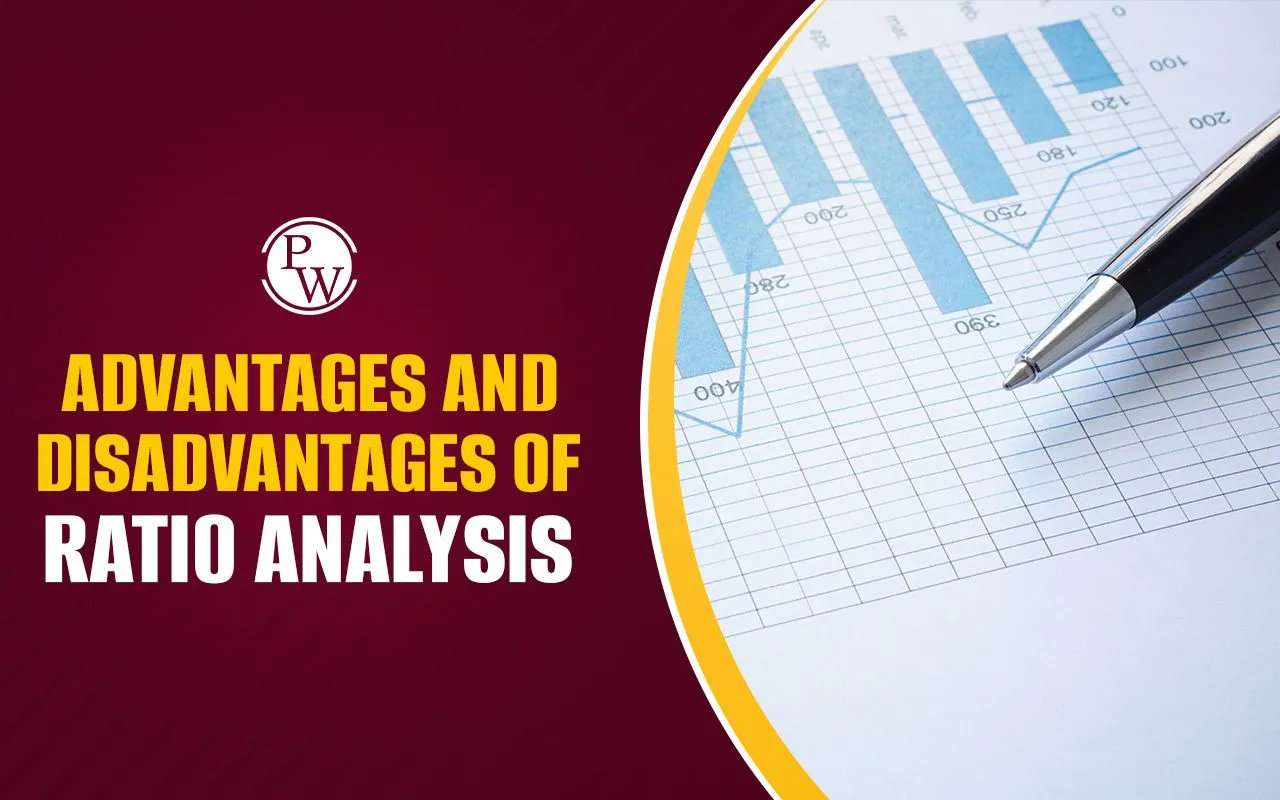

Types of Ratios: Ratios play a crucial role in financial analysis, helping businesses, investors, and stakeholders evaluate an organization's financial health. Types of Ratios provide insights into profitability, liquidity, efficiency, and solvency. Understanding these ratios is essential for making informed financial decisions. In this article, we will learn the various Types of Ratios and their significance in financial management.
What are Accounting Ratios?
Accounting ratios, also known as financial ratios, are an important business tool for analyzing financial statements. A ratio is a mathematical expression that compares two or more numbers and can be presented as a percentage, fraction, or proportion. When a ratio is calculated using accounting numbers derived from financial statements, it is termed an accounting ratio or financial ratio.
It is essential to ensure that accounting ratios are derived from meaningful numbers in financial statements. Errors in financial statements can lead to misleading ratio analysis. For example, calculating the ratio of office furniture (Rs. 5,00,000) to total purchases (Rs. 10,00,000) results in a ratio of 2:1, but this comparison lacks meaningful relevance.
Classification of Accounting Ratios
Accounting ratios are classified into two broad categories:
1. Traditional Classification
This classification is based on financial statements from which the variables are derived. The three types of ratios under this classification are:
Statement of Profit and Loss Ratios: These ratios use variables from the profit and loss statement.
Example: Gross Profit Ratio = (Gross Profit / Revenue) x 100.
Balance Sheet Ratios: These ratios derive both variables from the balance sheet.
Example: Current Ratio = Current Assets / Current Liabilities.
Composite Ratios: These ratios combine variables from both the profit and loss statement and the balance sheet.
Example: Trade Receivable Turnover Ratio = Credit Revenue / Trade Receivables.
2. Functional Classification
Based on their function, Types of Ratios are categorized as:
Liquidity Ratios
Liquidity ratios assess a company’s ability to meet short-term obligations.
Current Ratio = Current Assets / Current Liabilities
Quick Ratio = (Current Assets - Inventory) / Current Liabilities
Solvency Ratios
Solvency ratios evaluate a company's long-term financial stability.
Debt-Equity Ratio = Total Debt / Shareholders’ Equity
Debt to Capital Employed Ratio = Total Debt / Capital Employed
Proprietary Ratio = Shareholders’ Equity / Total Assets
Total Asset to Debt Ratio = Total Assets / Total Debt
Interest Coverage Ratio = EBIT / Interest Expenses
Activity or Turnover Ratios
These ratios measure how efficiently a company utilizes its resources.
Inventory Turnover Ratio = Cost of Goods Sold / Average Inventory
Trade Receivable Turnover Ratio = Net Credit Sales / Average Accounts Receivable
Trade Payable Turnover Ratio = Net Credit Purchases / Average Accounts Payable
Net Asset Turnover Ratio = Revenue / Net Assets
Fixed Asset Turnover Ratio = Revenue / Fixed Assets
Working Capital Turnover Ratio = Revenue / Working Capital
Profitability Ratios
These ratios analyze a company's ability to generate profits relative to revenue, assets, or equity.
Gross Profit Ratio = (Gross Profit / Revenue) x 100
Operating Ratio = (Operating Expenses / Revenue) x 100
Operating Profit Ratio = (Operating Profit / Revenue) x 100
Net Profit Ratio = (Net Profit / Revenue) x 100
Return on Investment (ROI) or Return on Capital Employed (ROCE) = (Net Profit Before Interest & Tax / Capital Employed) x 100
Return on Net Worth (RONW) = (Net Profit / Shareholders’ Equity) x 100
Earnings Per Share (EPS) = (Net Income - Preferred Dividends) / Average Outstanding Shares
Book Value Per Share = Shareholders’ Equity / Total Outstanding Shares
Dividend Payout Ratio = (Dividend Paid / Net Profit) x 100
Price Earnings Ratio (P/E Ratio) = Market Price per Share / Earnings Per Share
Importance of Accounting Ratios
Understanding Types of Ratios helps businesses and investors in several ways:
Performance Evaluation: Ratios provide insights into profitability, liquidity, and efficiency. They help in assessing how well a company utilizes its assets to generate revenue and maintain financial stability.
Investment Decisions: Investors use ratios to assess a company’s financial stability before investing. By analyzing profitability, solvency, and market valuation ratios, they can make informed investment choices.
Comparative Analysis: Ratios help compare different companies within the same industry. Benchmarking with industry standards allows businesses to identify areas for improvement and competitive advantages.
Risk Assessment: Solvency ratios highlight potential financial risks. Companies with high debt ratios may face difficulties in long-term sustainability, whereas a strong interest coverage ratio indicates financial stability.
Strategic Planning: Businesses use these metrics to improve financial strategies. By analyzing trends in key ratios, management can refine business plans, control costs, and optimize resource allocation for future growth.
Accounting ratios are essential tools for assessing a company's performance. The various Types of Ratios provide insights into different aspects of financial management, including liquidity, profitability, efficiency, solvency, and market valuation. By analyzing these ratios, investors and businesses can make informed financial decisions and enhance their financial stability. Understanding and applying these ratios effectively can lead to better financial planning and investment strategies.
Join PW Commerce Online Course and unlock your potential with quality education and dedicated learning support.
Types of Ratios FAQs
Why are accounting ratios important in financial analysis?
Which ratio is the most important for investors?
How do liquidity ratios differ from solvency ratios?













